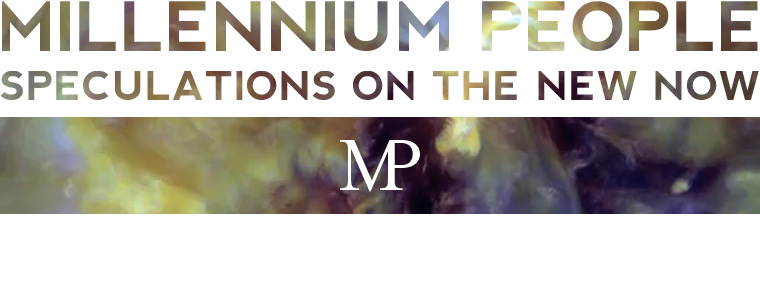
Last year I went to the Palais de Tokyo to see an exhibit. This is what I wrote.
“At a distance of 18,000km from the Earth," the guide notes "the elephant Würsa could balance on her trunk. It is on the basis of learned scientific calculations that Daniel Firman reached this conclusion, and came above all to produce this extraordinary work which confounds all our certainties regarding the gravitation of bodies.”
Wishful thinking at best, sophistry more likely. This phrase implies that the trick of the fibreglass cast on a pole is the logical end of a scientific investigation, it implies inevitability. The passage conjures the image of a diligent artist-scientist investigating gravity. Late into the night he pores over reams of calculations and suddenly, to his immense surprise, finds that the mass of an elephant… but this is a deception.
Fibreglass Würsa (herself not based on a real elephant, but the sum of images of elephants) surrounds a steel pole structure. The art is a trick, but the deception lies in the order of the art and the investigation. The passage implies that the art is inevitable, that it is nothing other than the logical outcome of scientific reasoning. In reality, it is the answer to an arbitrary question ‘how far from the Earth does an elephant have to be to balance on its trunk?’ In which case, why even ask the question? What is the difference between this and simply balancing the elephant on its trunk? Scientific validation to artistic whim. There is mystery and credibility to technology. I find this ‘technological’ approach to modern art flimsy, but ubiquitous. ‘I used technology as a tool to generate meaning and beauty’. This idea of the divinity of technology is false. It is controlled and predictable – the desired answer always dictates the technological question. In fact, this work is far more about ‘confounding all our certainties’ – not by presenting us with the unexpected, but the desired.
We live in an era in which the ease of technical generation (and extension by mechanical production) has rendered most art banal. The power of the virtual is such that we perceive homogenous space as virtual space. The ‘white cube’-style art gallery is the paramount example – it could be anywhere and anytime. The importance of the hidden structure in these places relates to their ability to suspend the laws of gravity, to generate the virtual manifest. Having conceptually idealised space in the virtual, a confusion or frustration results from the shortcomings of reality and our inability to arbitrarily control (consume) objects. The floating elephant, the semblance of a weight impossibly supported, is our desire, as it validates the virtual by manifesting it in the real. It is, of course, immediately recognisable as an illusion, and is therefore no longer such.
The moment of semblance lies only in the first fraction of exposure. Indeed, even this illusion does not whole satisfy our desires, this would involve the actual precession of the virtual, the actual suspension of gravity, the actual elephant actually floating. So we quickly lose interest in this ‘one-liner’. Semblance itself no longer interests us because the semblance of the virtual is perfect. In other words, the precession of the virtual means the real will always be catching up, the real will always be the virtual’s simulacrum.
To this extent, quite a lot of art and architecture concerns itself with ‘effects’. There is, however, one thing that remains meaningless in the virtual and meaningful in the real – violence. Hence the interest of Arcangelo Sassolino’s ‘Afasia 1’, “a sculpture that propels empty beer bottles [into a steel sheet] at more than 600km/h thanks to compressed nitrogen.” The mechanism is randomised, and a good deal of the spectacle lies in the anticipation of the loud bang and the instantaneous vaporisation of the bottle into a fine powder of green glass. But it is really a spectacle, a gratification of destructive desire. Not “physically compressed time… permanent memory, a dangerous equilibrium” but a gratification of the sole refuge of the real, violence, as it retreats from the primacy of the virtual.


while theory is good in theory, i think that these works stand on a very good leg (or trunk) with archaic idea of aesthetics alone. the idea of using scientific (supposed or not) concepts to get to a unique work is interesting as well as the idea of 'effects' and 'tricks'. encouraging to see this type of work being produced that is actually a pleasure to look at and contemplate, rather than just theorize over. thanks for sharing.
ReplyDeleteIn my opinion art is an act of communication. In many different and subtle ways it can trigger responses in the audience's mind and regardless of how ficticious the pseudo scientific process you so despise it evokes images and feelings in me when I enter a room and am confronted with what appears to be a real elephant doing something which my mind recognises as impossible. In my opinion it is the triumph of imagination over reality, a simple trick so that we can see something impossible with our own eyes. The title is simply the artist's way of guiding our imagination and decorating it with connotations. However you seem to think that this could only work if it had genuinely been born through scientific investigation. You make an interesting point but you make no effort to open a debate, you only express a dogmatic opinion.
ReplyDeleteMy question is: would this piece have nothing to say if it were called "untitled"?